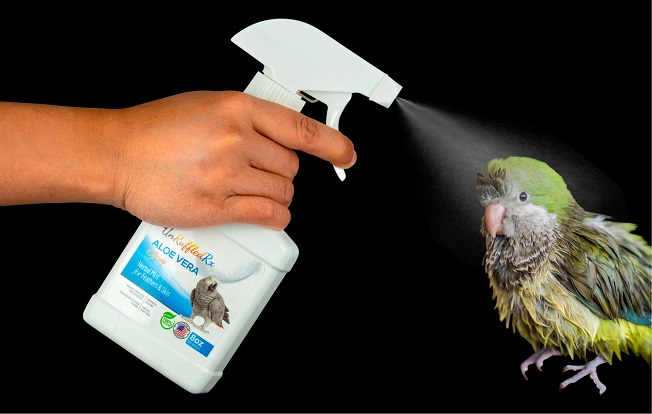
Pet birds are not only delightful companions with their colorful plumage and sweet melodies but also require a little extra care to ensure their well-being. One often-overlooked aspect of avian care is bathing. While some might assume that birds can maintain their cleanliness on their own, regularly giving your pet bird a bath is essential for their health and happiness. In this article, we will explore the reasons why you should give your pet bird a bath and provide tips on how to do it safely and effectively.
Why Bathing is Important for Pet Birds
Feather Health: Bathing helps keep a bird’s feathers clean and in good condition. Birds naturally produce an oil that they use to preen and maintain their feathers. However, this oil can accumulate dust and dirt over time, making the feathers less efficient in insulating and protecting the bird.
Hydration: Bathing not only cleans but also hydrates your bird. Birds can lose moisture through respiration and their skin, so providing them with a source of moisture is crucial to their overall health.
Stress Reduction: Bathing can be a fun and enjoyable activity for your pet bird. It helps reduce stress and provides mental stimulation. Many birds take great pleasure in splashing around in the water.
Molting Support: During molting, birds shed old feathers and grow new ones. Bathing can alleviate the itching and discomfort associated with molting by softening the keratin sheaths around new feather growth.
How to Bathe Your Pet Bird Safely
Now that we understand why bathing is essential, let’s explore how to give your feathered friend a refreshing bath:
1. Choose the Right Method
Spray Bath: Most pet birds prefer a gentle misting or spray bath. Fill a clean spray bottle with lukewarm water and gently mist your bird from a distance. Avoid spraying directly into their face to prevent stress.
Bowl Bath: For larger birds or those that enjoy full immersion, provide a shallow dish of lukewarm water. Ensure the water level is safe and that your bird can stand comfortably without the risk of drowning.
2. Timing Matters
Bathing in the morning allows your bird to dry off naturally in the warmth of the day. Avoid bathing your bird too close to bedtime, as they may get chilled during the night.
3. Temperature and Water Quality
Use lukewarm water, around room temperature. Avoid extremes, as birds are sensitive to temperature changes. Ensure the water is clean and free from chemicals. Tap water is generally safe if it’s safe for you to drink.
4. Supervision
Always supervise your bird during their bath. Birds can be curious and may accidentally ingest or inhale water.
5. Allow Freedom of Choice
Not all birds enjoy bathing, so it’s essential to observe your bird’s preferences. Some may prefer a daily misting, while others may enjoy weekly bowl baths. Respect their choices.
6. Post-Bath Care
After bathing, provide a warm, draft-free environment for your bird to dry off. Avoid exposing them to cold drafts, as wet feathers can lead to illness.
Conclusion
Bathing your pet bird is not just about keeping them clean; it’s a vital part of their health and happiness. Regular baths help maintain feather health, provide hydration, reduce stress, and support them during molting. By following the right methods and ensuring a safe and enjoyable bathing experience, you can contribute to your feathered friend’s well-being and strengthen the bond between you and your avian companion.
Related Articles & Free Email Newsletter Sign Up
How to Nurture Healthy Feathers: A Guide to Proper Pet Bird Nutrition
The Blue Penguin is a Marvel of the Southern Seas

Comment here